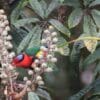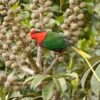Papuan Lorikeet
Also known as:
Papuan Lory
Also known as:
Papuan Lory
DID YOU KNOW?
Papuan Lorikeets can be found up to 3500 m (11,480 ft) in montane forest.

Charmosyna

papou
Size:
25 cm (9.75 in)
Weight:
90-115 g (3.1-4 oz)
Subspecies including nominate:
one
Colour Adult:
Both adults in general red; dark green mantle and wings; pale blue streaked in front of black patch on rump; thin black band across hindneck; blue patch on rump and upper tail coverts; lower flanks and sides of breast have yellow patches; black thighs and abdominal band with purple shine; red underwing coverts; green tail tipped with yellow. Beak orange/red. Eye yellow/orange.
Colour Juvenile:
In general duller than adults; with black margins on neck and breast feathers; duller blue patch on rump less extensive; yellow underwing band in varying proportions; central tail feathers considerably shorter. Beak brown/orange tipper with black. Eye dark brown.
Call:
Are described as distinctive; in flight are loud and slurred in upward inflection; also quieter, mellower screech. When feeding or at rest emits a nasal, long note increasing in volume.
More Information:
Content Sources:
CITES
BirdLife International
Cornell Lab of Ornithology/Birds of the World
Parrots: A Guide to Parrots of the World, Juniper and Parr, 1998
Parrots of the World, Forshaw, 2006. 2010 edition
Lexicon of Parrots, Thomas Arndt.
Parrots in Aviculture, Low, 1992.
Captive Status:
Uncommon
Longevity:
15+ yrs
Housing:
Aviary with concrete, sloping floor towards drain, or suspended enclosure over concrete base.
Diet:
Nectar, either a commercial type or homemade from baby cereal (lactose-free), honey and malt extract or molasses, mixed with filtered water and made fresh daily; fruit (once or twice daily) such as: apple, pear, banana, orange, cactus fruits; vegetables such as: carrot, fresh corn on the cob or unsalted tinned sweet corn, green leaves such as Swiss chard, lettuce or dandelion; rearing food made from hard-boiled egg, wholegrain bread and carrot, all ground to a crumbly consistency.
Enrichment:
Avid bathers, provide water bowls or spray misters once a day; socialization; large enclosure for daily flights. Also provide swings, ladders and other toys, all easy to clean, to appeal to the acrobatic nature of this species.
Nest Box Size:
Vertical box 6″ x 6″ x 12″ (15.2 cm x 15.2 cm x 30.5 cm).
Clutch Size:
2
Fledging Age:
60 days
Hatch Weight:
—
Peak Weight:
—
Weaning Weight:
—
World Population:
Unknown but described as fairly common, stable.
IUCN Red List Status:
Least Concern
CITES Listing:
Appendix II
Threat Summary:
Hunting for feathers which are sought after for tribal head-dresses and capture for the wild bird trade are not thought, at this time, to be factors affecting population size. This species is considered to have a medium dependency on forest habitat, and tree cover is estimated to have declined by only 1.4% within its mapped range over the past three generations. Its population trend is therefore considered stable.
Range:
Vogelkop Mountains, West Papua, Indonesia.
Habitat:
Found up to 3500 m (11,480 ft) in Nothofagus-Podocarpus forest.
Wild Diet:
Feeds on nectar, pollen, flowers, flower buds, fruits of Schefflera and small seeds.
Ecology and Behaviour:
Usually seen in pairs or groups. Very active and agile. Moves through trees with jerky movements flicking their long tails.
Clutch and Egg Size:
2 eggs, 24.5 x 22.5 mm (0.9 x 0.8 in)
Breeding Season:
Possibly August, with young birds seen in October and November.
Related Links:
—
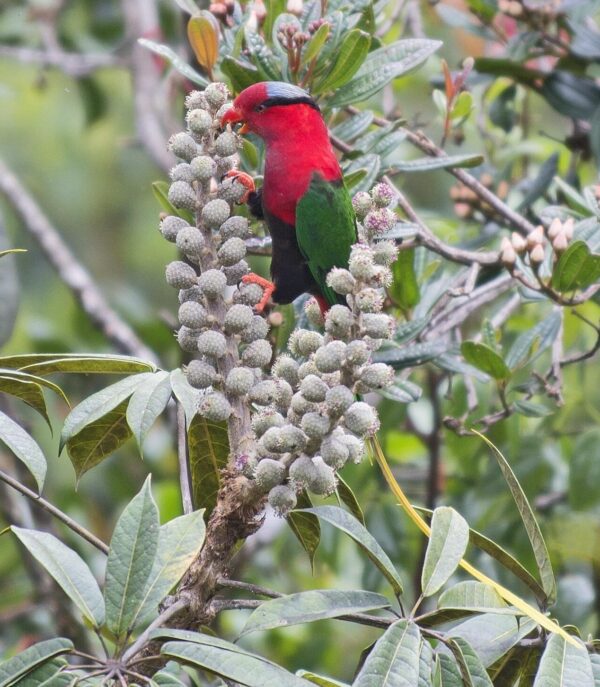
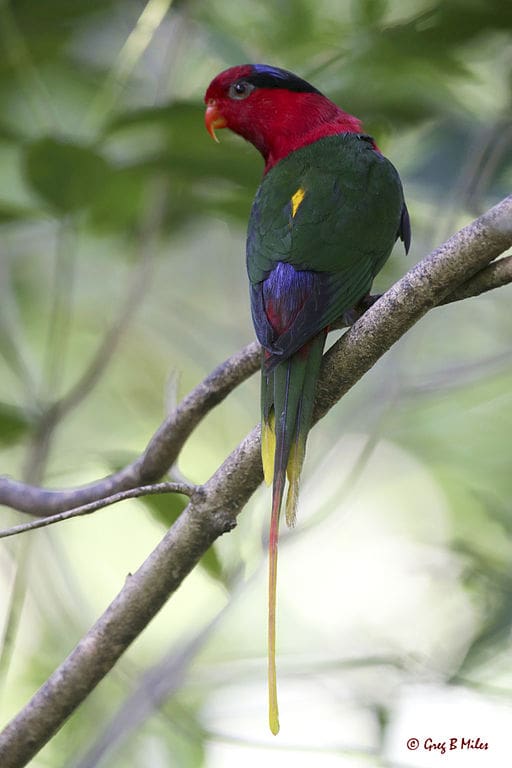
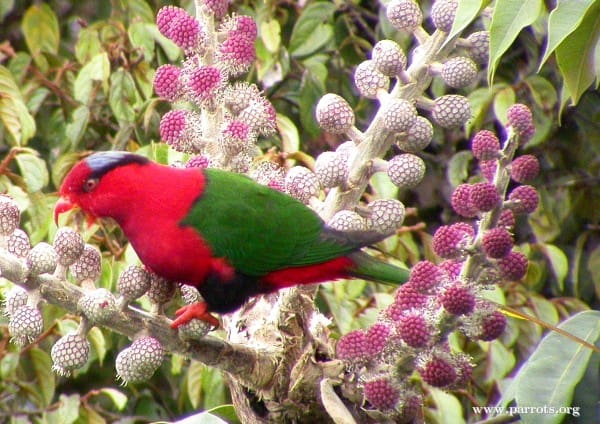
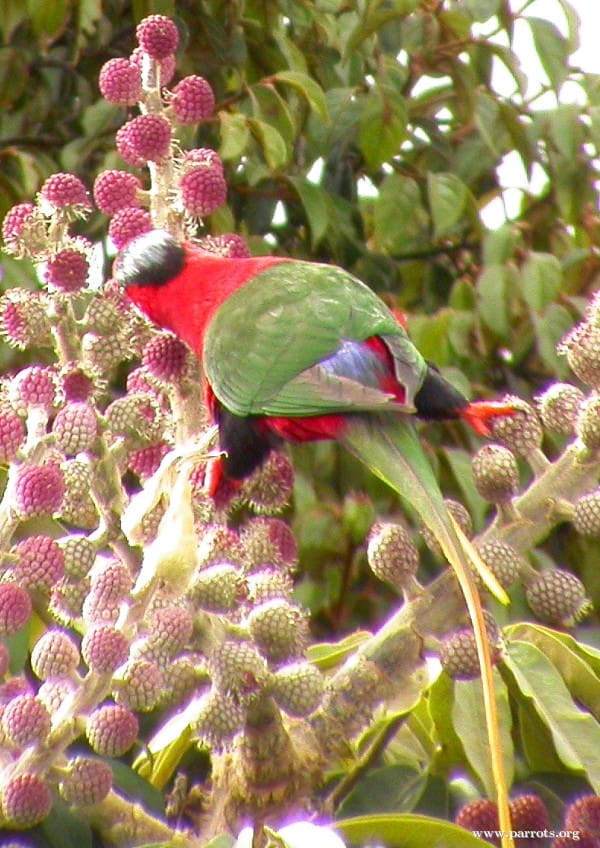

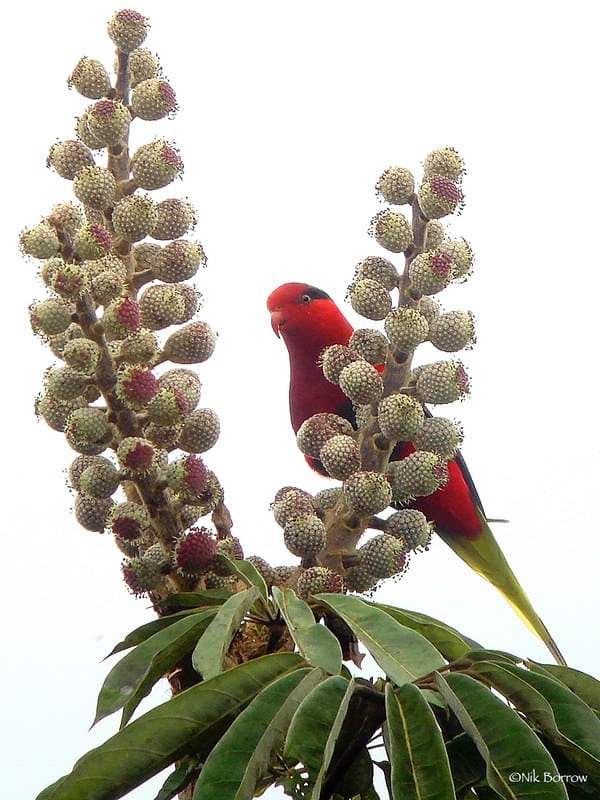
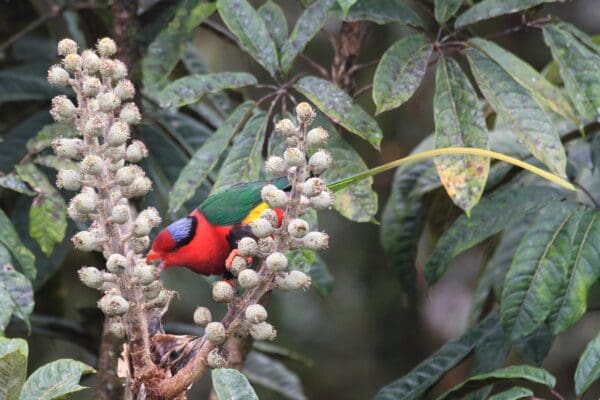
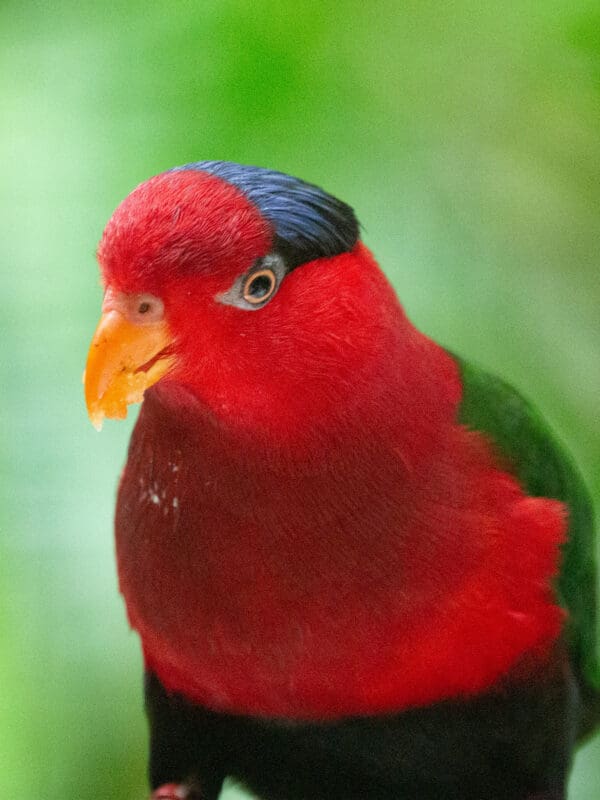
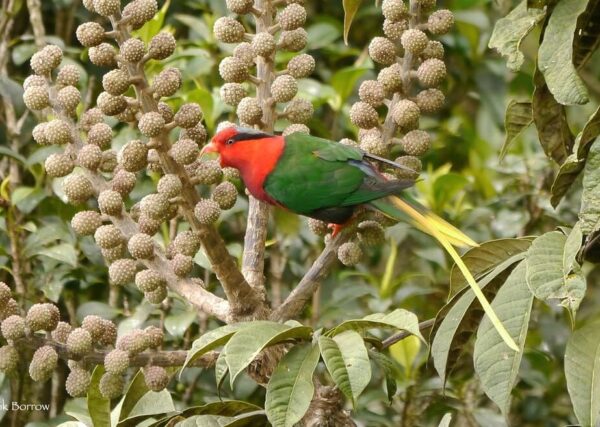
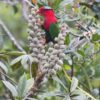
![© Greg Miles [CC BY-SA 2.0] via Wikimedia Commons A wild male Papuan Lorikeet perches on a branch](https://parrots.org/wp-content/uploads/2023/01/wpt_Papuan-Lorikeet_1257-4-100x100.jpg)
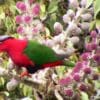
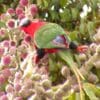
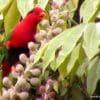
![© Nik Borrow [CC BY-NC 2.0] via Flickr A wild Papuan Lorikeet perches on blossoms](https://parrots.org/wp-content/uploads/2023/01/wpt_Papuan-Lorikeet_1257-9-100x100.jpg)
